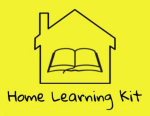This is the fourth part of a five part series about learning styles where we cover Kinesthetic Learners
Follow this link to Part One of the series: Learning Styles Summary
Follow this link to Part Two of the series: Visual Learner Summary
Follow this link to Part Three of the series: Auditory Learner Summary
Using all the knowledge I dropped in part one of the series, you have figured out your child is probably a Kinesthetic Learner. You probably knew already though. They’re always running around, climbing, jumping, and touching everything. My daughter falls into this group, where no platform is too high, no cupboard contents are safe, and no chair is comfortable enough to sit for five minutes.
Characteristics of a Kinesthetic Learning Style:
Learns best through using their hands and body to interact
- Hands-on activities and learning are super interesting.
- If material can be explored and manipulated (like digging or taking apart) that’s even better.
Creating something helps them retain information
- Information is remembered easier with hands-on projects or having to move their body.
Prefers to use experiences and things that are real
- Lessons related to real life activities and experiences are easier and more fun to learn.
Tips and Tricks to Help Your Kinesthetic Learner
You probably already have some ideas of what you can do to help your Kinesthetic Learner in your homeschool. A lot of this comes naturally since it’s very often like play time. Here’s some ideas that I want to share.
- Make things
- Models, diagrams, songs, dances, etc. Your kiddo wants to create!
- Apply lessons to a practical problem where you can use problem solving strategies
- Relate the information to something they know.
- Use building blocks of different colors for the parts of a sentence (noun, verb, adjective, etc.)
- Do math problems by splitting up their favorite snacks.
- Have them use problem solving techniques to understand and question the material
- Brainstorm solutions, trial and error, asking questions
- Your child may struggle with writing, so make sure to put plenty of real-life examples into their notes to help them remember.
- Relate the information to something they know.
- Use all 5 senses when learning
- The more senses used when studying a topic, the better!
- Have them move snacks around, sort them by color or type, and then munch on them to do math.
- Lessons on a topic can be all-in-one, or you can break them up into several lessons/activities on the same topic. This might help reinforce the subject and keep individual lessons simple.
- The more senses used when studying a topic, the better!
- Get moving!
- Chewing gum, pacing, rocking in a chair, or tapping their finger or pencil can help them focus. Careful: There’s a fine line between these actions helping them focus and goofing around.
- Remember: Whatever you allow them to do during assignments and lessons should be acceptable for test taking time.
- Many states require either a standardized test or an assessment from a school district representative when you’re homeschooling. You don’t want your child struggling with test taking because they’re too dependent on moving to stay focused.
- Group projects with other kids and adults
- The give and take of talking and creating with others can be a big boost of brain power.
Wrapping Up
Teaching a kinesthetic learner can be a lot like play time with your child. You get to make things, move around, and relate the lessons to your family’s lives and experiences. I’m going to repeat this in every one of these learning style posts: Remember, using tips and tricks like the ones described here is a good way to help your kinesthetic learner when they’re struggling with a topic, but it’s not meant to avoid teaching in other ways. Make sure your child is still getting practice learning in a variety of ways so they can develop and become strong, independent learners!
Stay tuned for Part 5 of the series: Reading Writing Learner Summary! If you haven’t yet, sign up for my newsletter using the button below and have every new post delivered straight to your inbox! Plus get a free state by state homeschool guide covering the different laws for you to homeschool!
Do you have a kinesthetic learner at home? Tell me how you help them succeed in homeschool! Also, how do you stop them from wrecking the house? I’m still working on that…

